Dare you venture into the dark and foreboding RPG fantasy that is Hall or Nothing’s Gloom of Kilforth?
Thanks to a hugely successful Kickstarter campaign, Gloom of Kilforth has recently been reprinted for a second time, but this multi-award winning role playing game has even more to offer than its incredible artwork might suggest. The singular vision of solo designer Tristan Hall, Gloom of Kilforth offers one of the most complete imagination stimulators that I’ve ever encountered.
Gloom of Kilforth is a solo or cooperative experience that is equally enjoyable at anything from one to four players, and what it really excels at is providing the players with a structure, a set of rules and a clear objective to proceed towards. Over the course of about the next two hours, the players will marvel at the glorious artwork, reel from the terrifying enemies and lament their poor dice rolls, but Gloom of Kilforth is so much more if you treat it as a shared narrative experience.
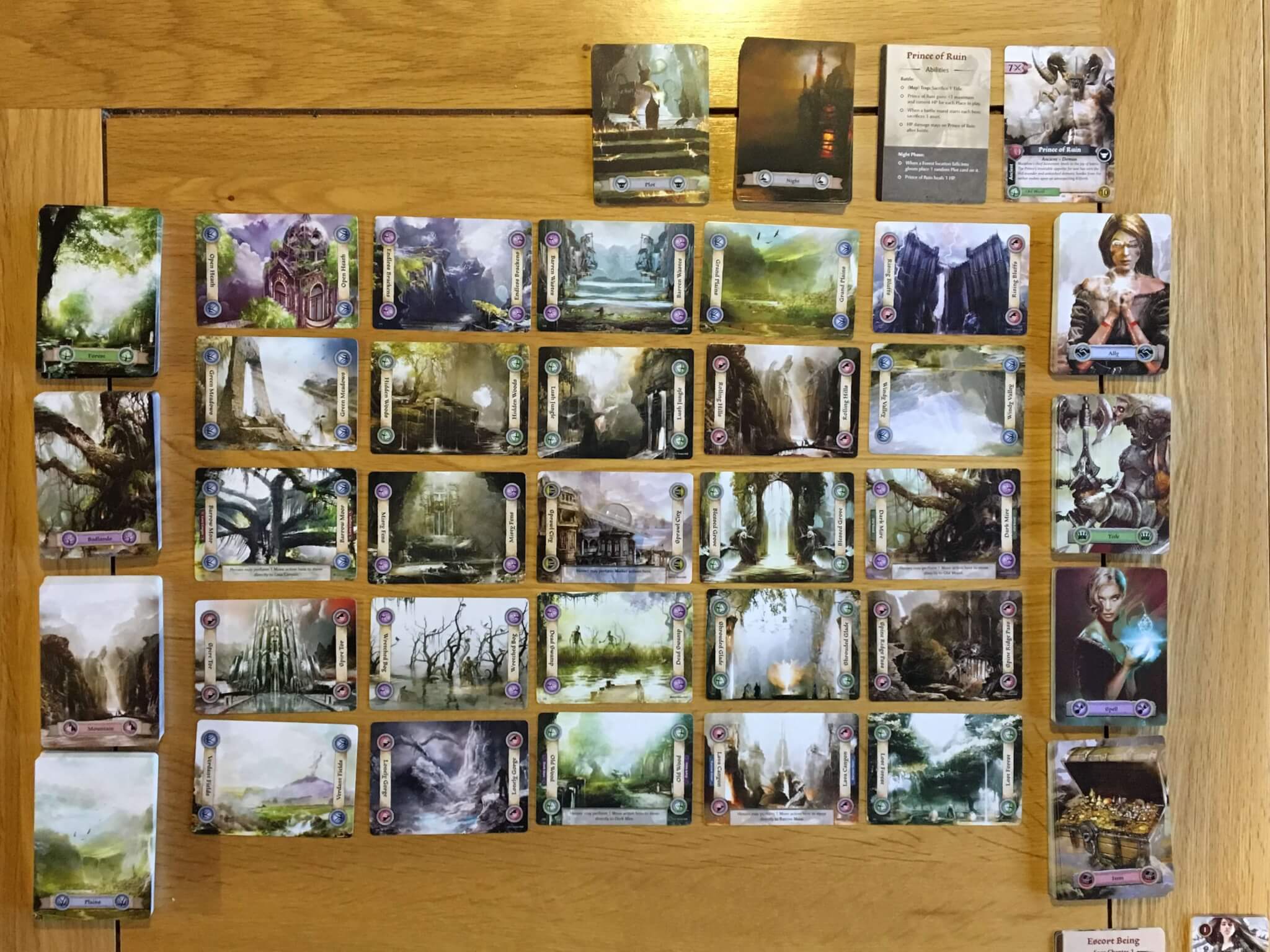
The game begins with a setup that involves a fair bit of card sorting and only becomes second nature after a few games. Twenty five location cards are laid out on the table in a five by five grid and then encounter decks for each kind of landscape are placed beside them. Players then sort draw decks for allies, items and spells to place at the opposite side of the board.
Various elements of personal setup must then take place. Each player chooses a race and class (either randomly or by design) which will inform their basic stats — Fight, Study, Sneak and Influence — as well as their starting HP and gold. Players will also need to set up their own saga, which is a series of four individual missions that end with a finale and then do battle with (and hopefully defeat) an ancient enemy with a plot deck of their own. Again, these elements are all card driven and can be randomised or preconfigured.
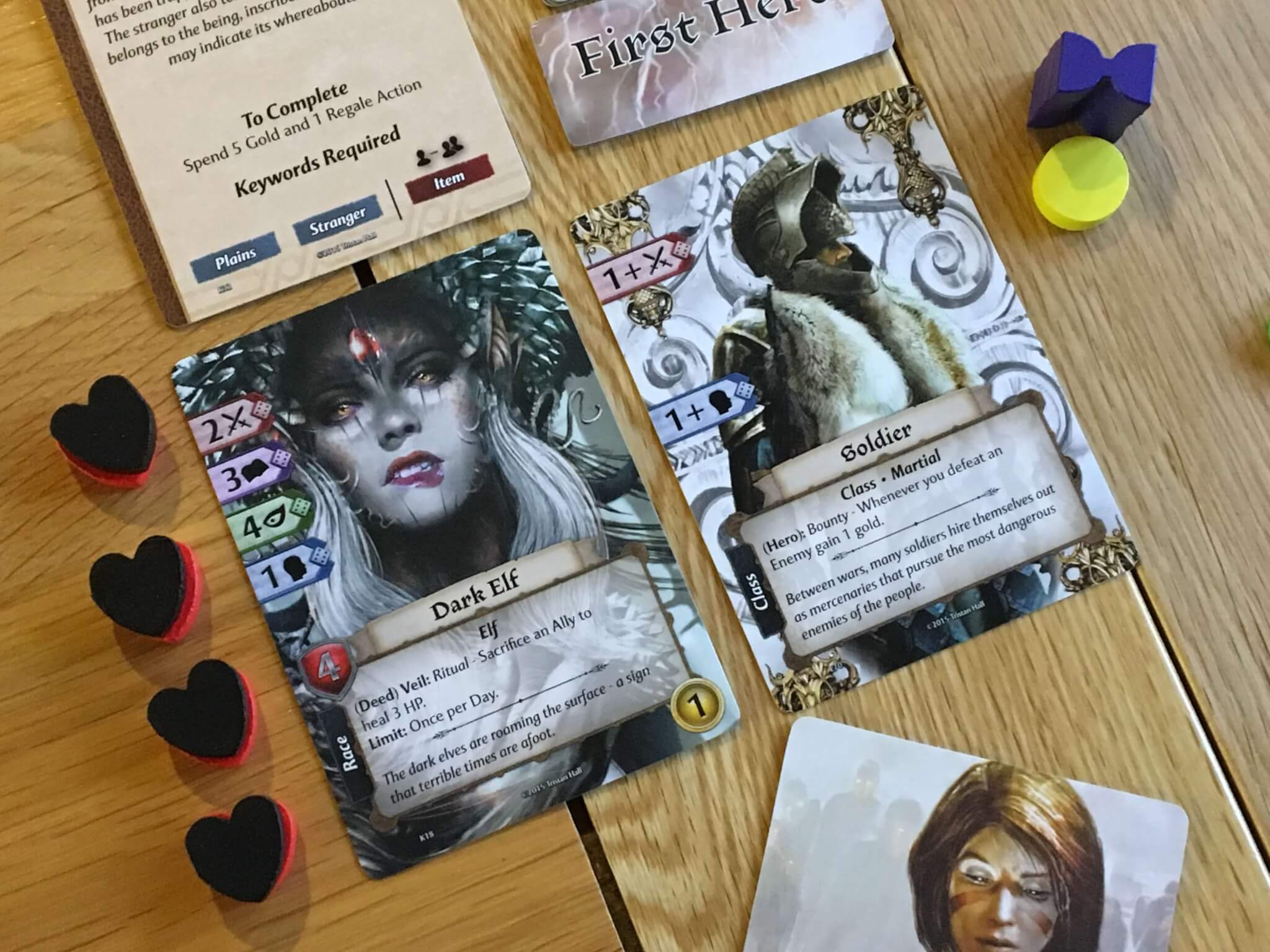
With all of this done, the game will be ready to begin. There are a few other elements to consider, such as which initial cards to draw and keep among other things, but that’s the gist of it. At this point, Gloom of Kilforth begins to show the ways in which it differentiates from most other games, usually for the better, although it does often use terminology that the players will need to become used to.
As an example, the cards in a players hand are essentially known as rumours and are not actually available to be played. In effect, the player knows about the things on the cards they hold, but they have not actually seen them in the flesh or added them to their inventory. Each card of this kind has a location on it, and when the player visits that location, under certain circumstances, that rumour might become a reality that can then be played in that players area.
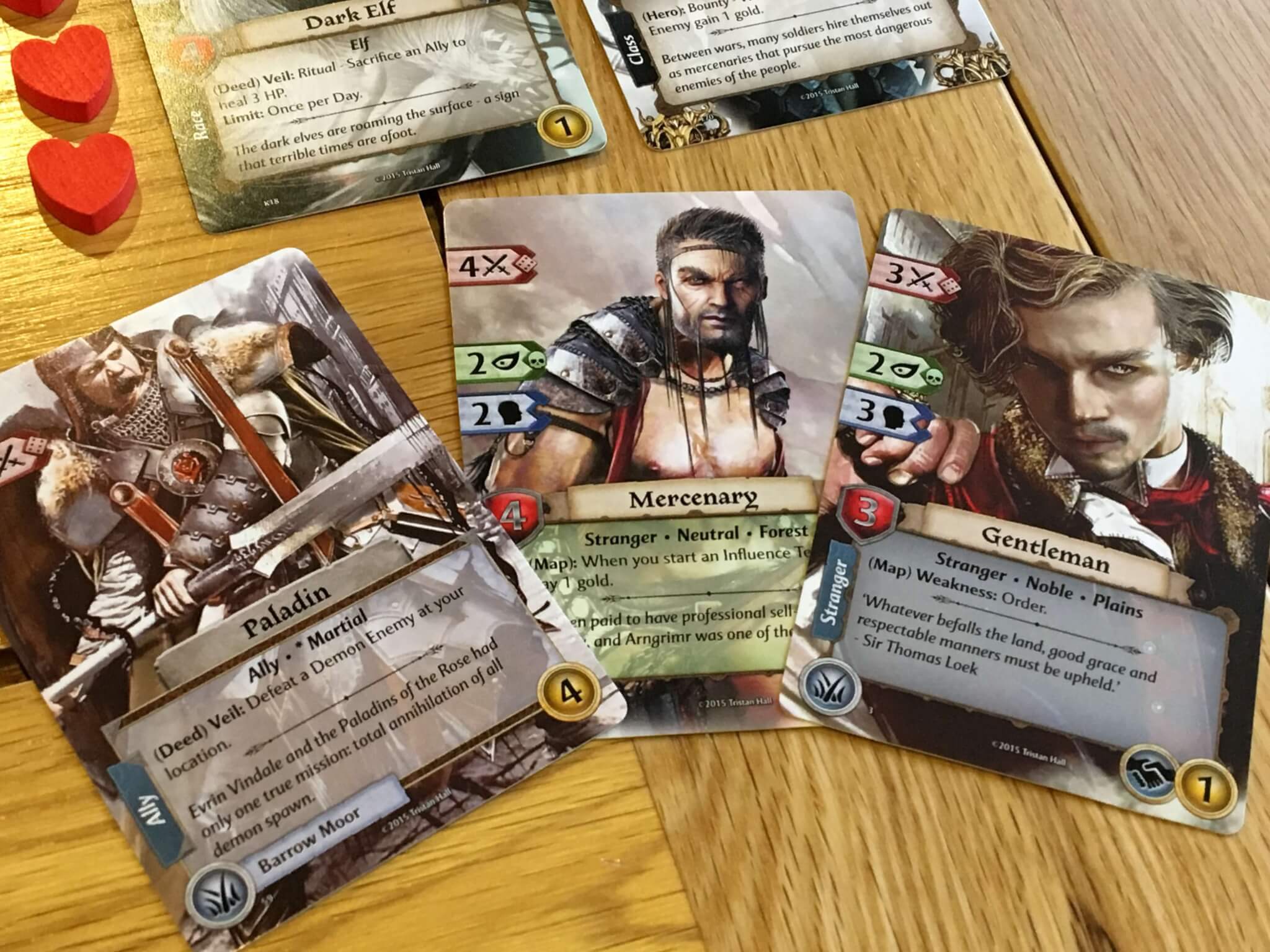
This is where the imaginative elements of Gloom of Kilforth begin to manifest. For example, if a player holds a card that represents a piece of armour that is rumoured to be in a certain forest location, then when they get there, they may pass a test to add it to their inventory. Functionally, this is simple, but you’ll never make the most of Gloom of Kilforth if you’re unwilling to add your own backstory about how the armour got there and why your particular hero knows about it and ultimately obtains it.
Having looked into some of Tristan Hall’s other work (bearing in mind that we previously reviewed 1066: Tears to Many Mothers) and his design diaries, I think the need to bring the game to life is intentional and it is also reflected in the chosen character stats. Hall previously described on BGG how he wanted the stats to be named in such a way that players would be able to really act out what their character was doing. Influence might be threatening, reasoning or deceiving, whilst fighting is a less traditional way to describe the combat stat than strength.
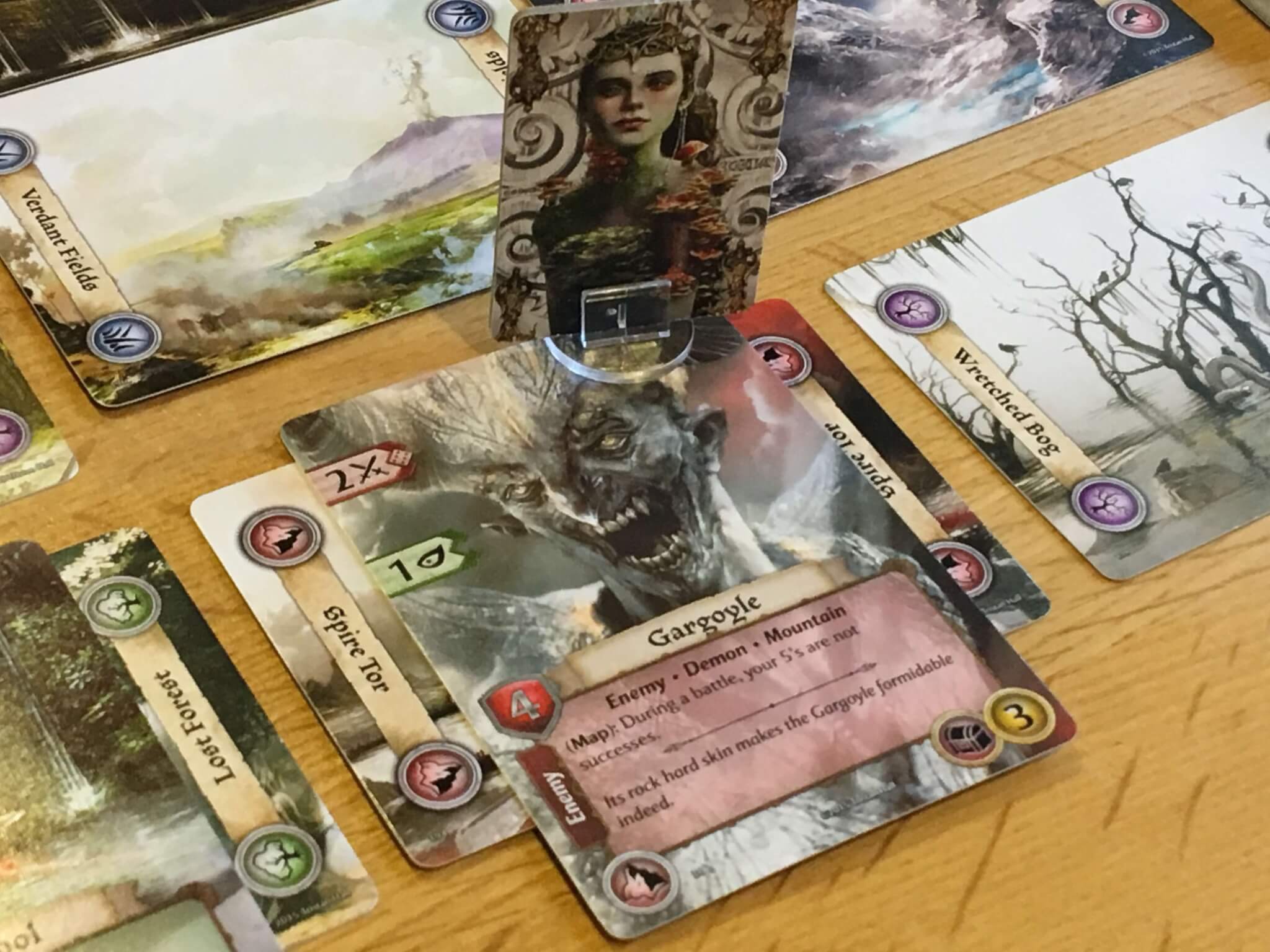
Flipping back to a more direct description of the game helps to make this point. On their turn, players simply move around the location spaces, dealing with the encounters that appear and ultimately, collecting the keywords on their current saga step that will allow them to advance. A saga might simply ask the player to collect a badlands keyword, spend five gold and take a camp action.
If you take these steps as purely functional requirements, Gloom of Kilforth will seem fairly boring. The average power gamer will attempt to plot the fastest route to obtaining five gold whilst collecting the badlands keyword along the way — and in the competitive mode, that would be valid. The true fan of Gloom of Kilforth, or the RPG aficionado on the other hand, will feel compelled to create a narrative that strings those events together.
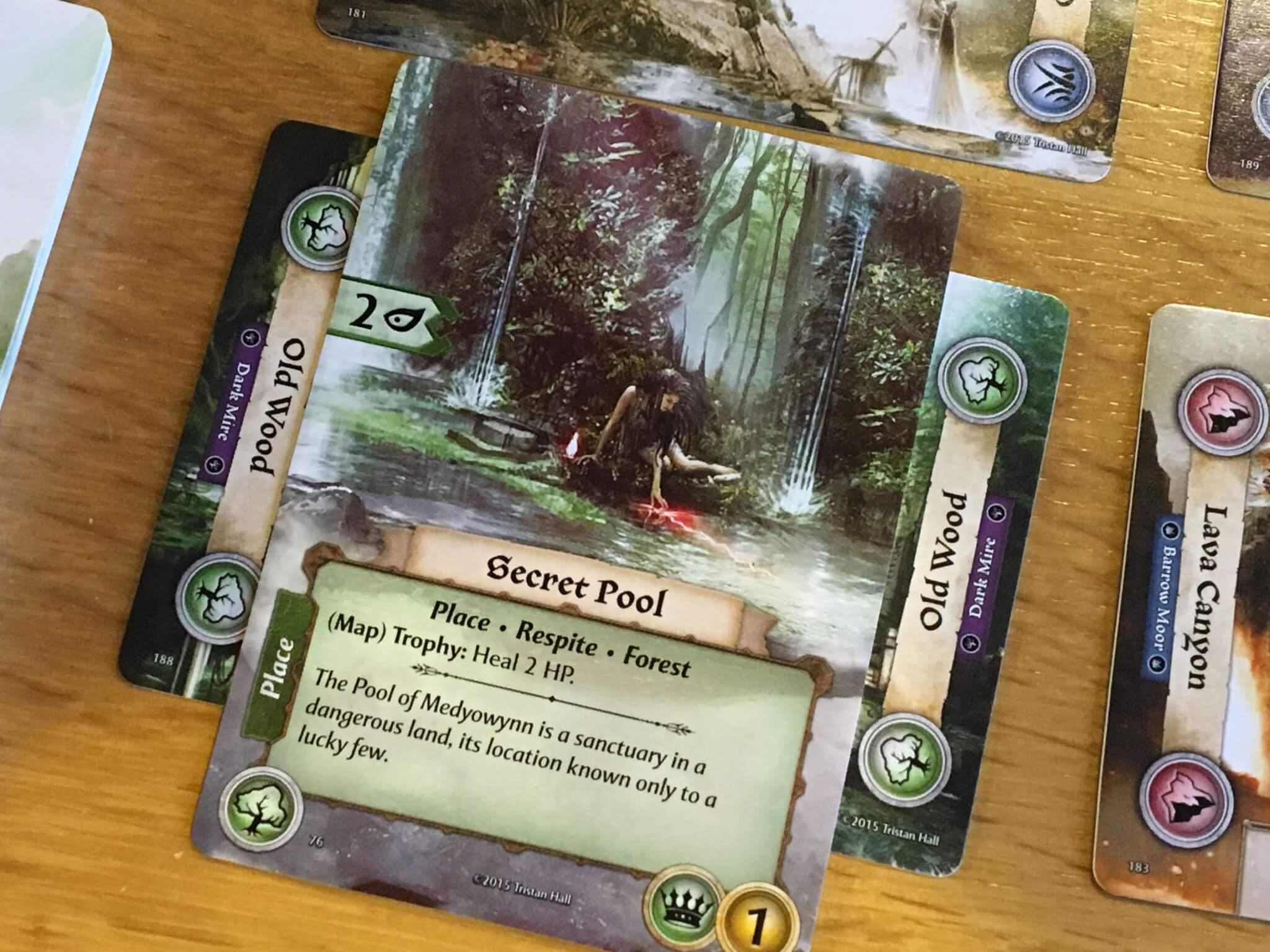
My experience playing Gloom of Kilforth was greatly enhanced by the Official Soundtrack, which consists of fourteen pieces of instrumental music written and performed by Hall’s wife, Francesca, who is already a decorated musician. With tracks that range from playful and inquisitive at the start to dark and tumultuous later on, playing the game with the OST in the background and nothing but candlelight is a powerful experience.
I’ve spent a lot of time describing what I guess will sound like a lot of hard work for the player — imagining this and filling in that — but in fact, Gloom of Kilforth presents an awful lot of the pieces needed. For starters, it has the best artwork in any game, full stop. Sure, it’s fairly traditional high fantasy and perhaps some players will see that as old hat, but in terms of the quality of the art and the detail lavished upon the locations, characters and items, Gloom of Kilforth is second to none.

Combine this incredible aesthetic (and don’t forget the soundtrack) and you already have a lot of atmospheric presence. Then add the encounters, which are each their own little test or story, as well as the saga’s and the plots of the Ancients — you have quite a lot going on. The Ancients themselves represent a fearsome enemy both in terms of how they look and how they affect the game.
Without going into detail about the various phases of a turn in Gloom of Kilforth, the flow could be summarised to say that during the day, the players move, take actions and roll against various tests (each relating to their base stats) and then rest. During the night, however, the night deck affects the board state by adding bad weather, various enemies and hazards and by advancing the Ancients plot. Each Ancient has their own idea about how to bring the world into gloom, but each and every plot card drawn from the Ancient deck will only result in bad things for the players.
If, before twenty five days are through (at which point the night deck runs out) the players can complete their own saga(s) and defeat the Ancient, then they will win. Gloom of Kilforth is probably the only solo/competitive game of this sort that I’ve played which is truly variable in terms of outcome. Games in this bracket tend to be quite easy or fairly hard, but I find that Gloom of Kilforth varies more. This, in my opinion, is in keeping with the roleplaying or adventuring feel that it seeks to create and even in losing — I’ve generally enjoyed myself.
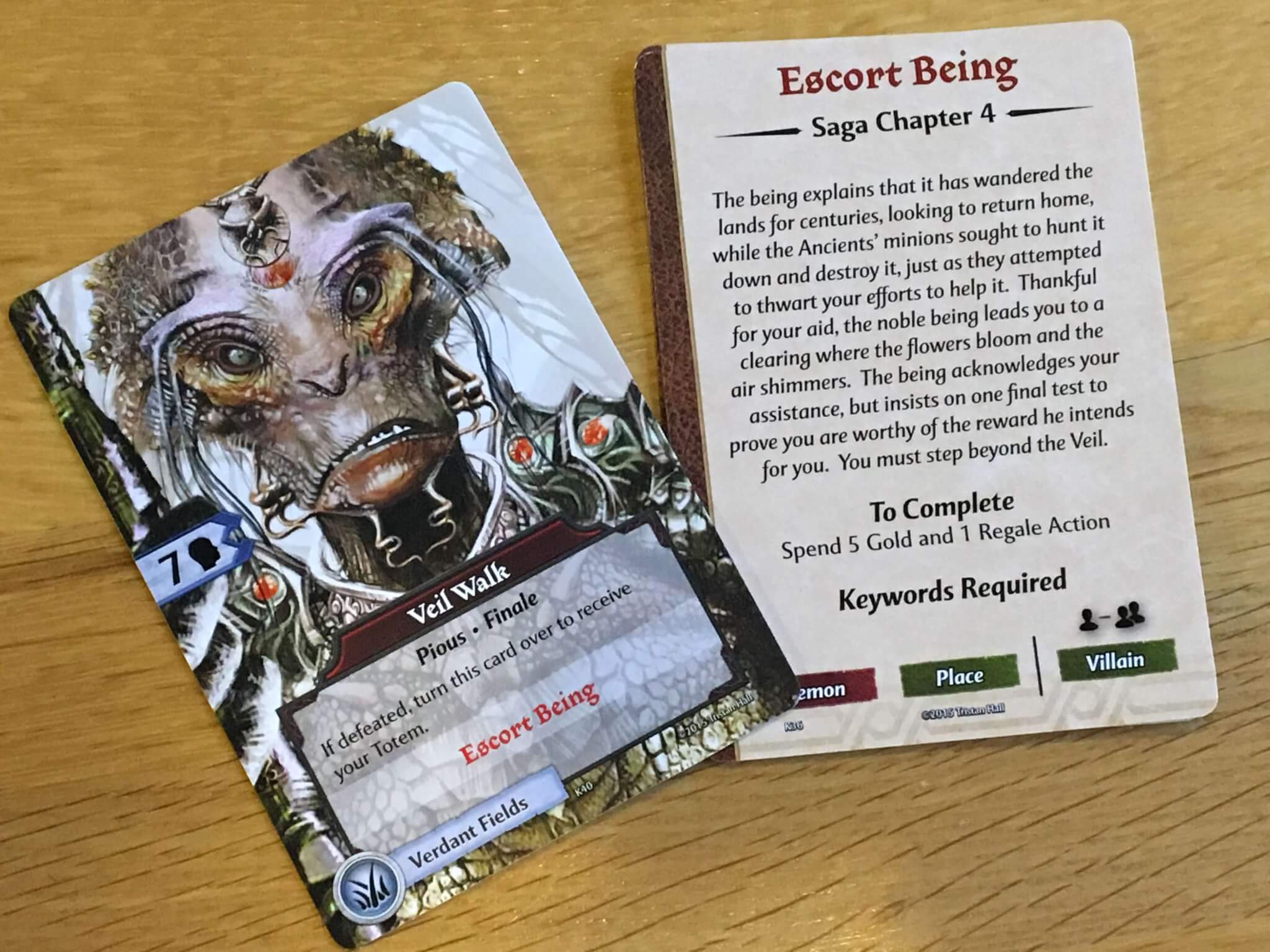
In summarising, I think that Gloom of Kilforth is a very unique game. It offers a very fast, quite light roleplaying game experience with none of the usual rigmarole that comes with having to plan games over multiple sessions and so on. As a result, I think it could appeal to fans of dungeon crawlers as well, since it does have some similar aspects in terms of combat, tests and building up a character.
The closest experience that I’ve had to Gloom of Kilforth is probably with HEXPlore IT: Valley of the Dead King, but even then, both are pleasingly different. Gloom of Kilforth is a must have for fans of solo or competitive RPG’s, but it’s also a beautiful looking product that casual game fans could enjoy thumbing through and playing from time to time. It’s easy to learn and teach and the speed at which a game is complete is a big plus. Very highly recommended.
Gloom of Kilforth is available for purchase right now.
Love board games? Check out our list of the top board games we’ve reviewed.
